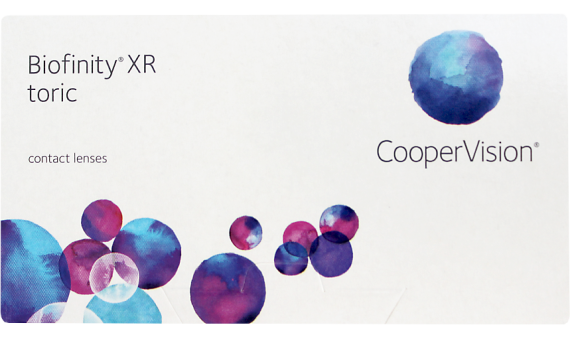Specialty Contact Lenses – Vol 1: Extended Range
Have you ever been told you aren’t a great candidate for contacts? Too much astigmatism? Too high of a prescription? Need cheaters for near work? Irregular cornea? Would it surprise you to learn that that good options exist for each of these cases? This series of blog posts will be focused on different specialty contact lenses and how they may benefit you. We’ll start with extended range contacts.
Extended Range Soft Contact Lenses
“My previous doctor told me that I have too much astigmatism for contacts.” This is something we hear every few weeks. And while it is correct that in optometry’s bygone era soft contacts were not a good option for those with large amounts of astigmatism, the industry has answered the call and responded with extended range lenses. With most standard lenses correcting up to -2.25 D of astigmatism, extended range lenses can correct up to -5.75 D of astigmatism.

A quick note on astigmatism
“Astigmatism” is a term that gets thrown around a lot, but remains a bit of a mystery to some. It may surprise you to learn that a third of the population has some amount of astigmatism and 70% of prescriptions correct for astigmatism1. This is less surprising when you learn that astigmatism just means your cornea (the clear dome on the front of your eye) isn’t a perfect sphere and is more oblong, like a football. It is possible to have low astigmatism that doesn’t require glasses or contacts or can be neglected when wearing contacts. Other patients, however, need to have their moderate to high astigmatism addressed with glasses and/or contacts that include astigmatism (toric lenses).
Evaluation Considerations:
Some optometrists might scoff at the idea of extended range contacts being “specialty” and I wouldn’t necessarily disagree. But due to the uncommon nature of these evaluations, moderate level of customization, and need for return visits, they’re a great intro to the idea of specialty lenses for the purpose of this blog.
With extended range contacts, trial lenses are not kept in-office like our typical lenses. Once your doctor identifies your prescription during your eye exam, a trial set of lenses will be ordered. Depending on your prescription, it may take a few weeks for trial lenses to be received. You will then pick them up from our office and trial them for 1 week, returning for an evaluation of health, comfort and vision. At this point the prescription will be finalized or another set will be ordered for trial. Once adequate health, vision, and comfort are achieved, the prescription is finalized and you’re free to live your best life in your contacts!
What Happens if I Don’t Have a Good Outcome with Extended Range Contacts?
It’s important to note that there is no silver bullet when evaluating specialty contacts and there is never a guarantee of success. If extended range contacts are not a viable option, there remain many other options on the table. If a patient is motivated to try, we have several other options at our disposal. In a few weeks we’ll discuss how everything old is new again with gas permeable, or “hard” contact lenses.
What Options Are Best for You?
Drs. Shaver and VanAusdal understand that your situation and needs are unique. To learn more about what the best course of action for you would be, scheduled an appointment today by calling us at 480-656-7739!
1 https://www.eyecarebusiness.com/issues/2013/september-2013/basics-and-beyond-astigmatism
Leave a Reply Cancel reply
follow us
schedule an appointment
website designed by katie & Co. Design
come visit us AT EITHER LOCATION!
The Eye Shop OCOTILLO
21321 E. Ocotillo #105,
Queen Creek, AZ 85142
THE EYE SHOP POWER
18550 E. RITTENHOUSE #100,
Queen Creek, AZ 85142